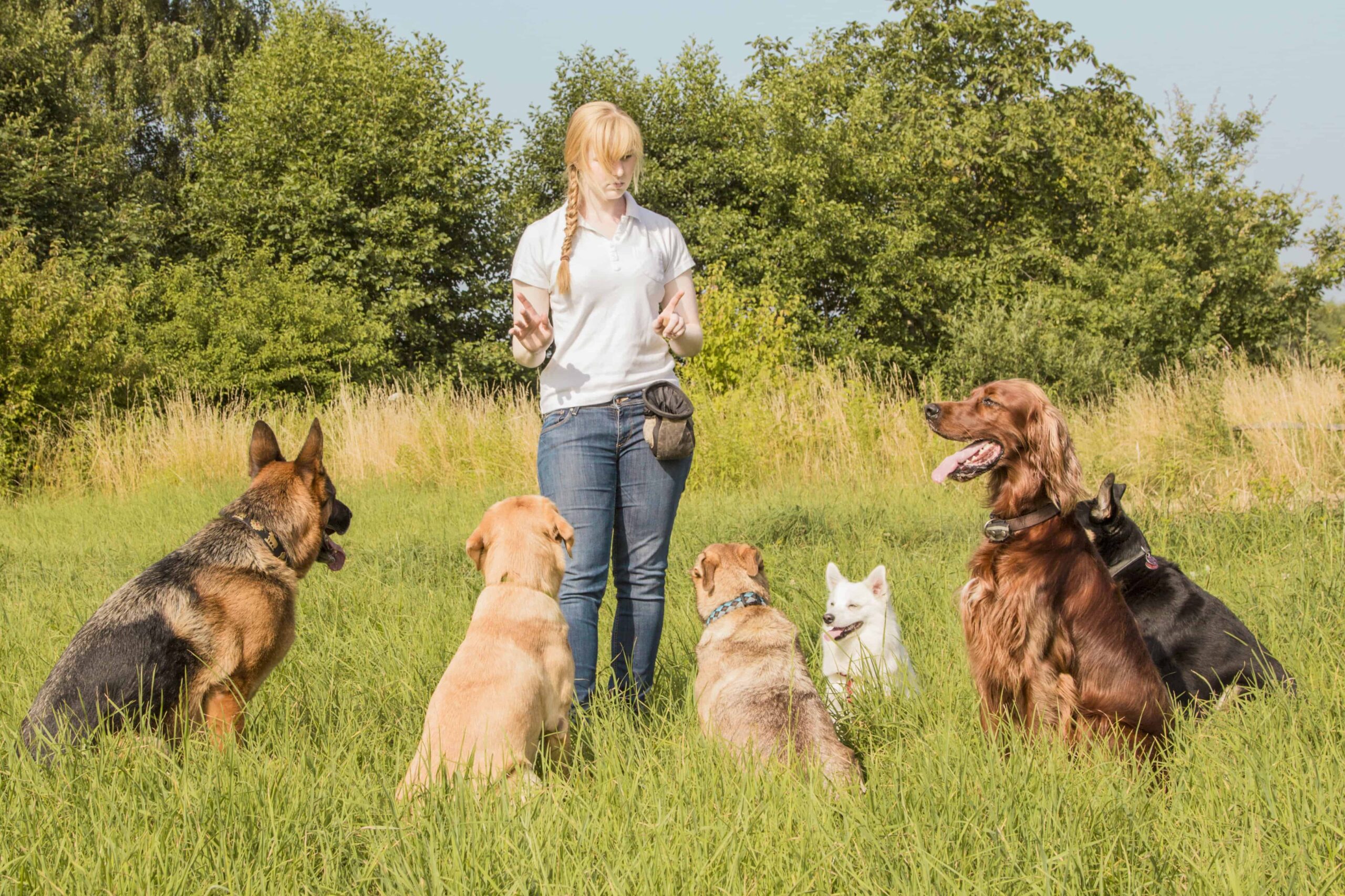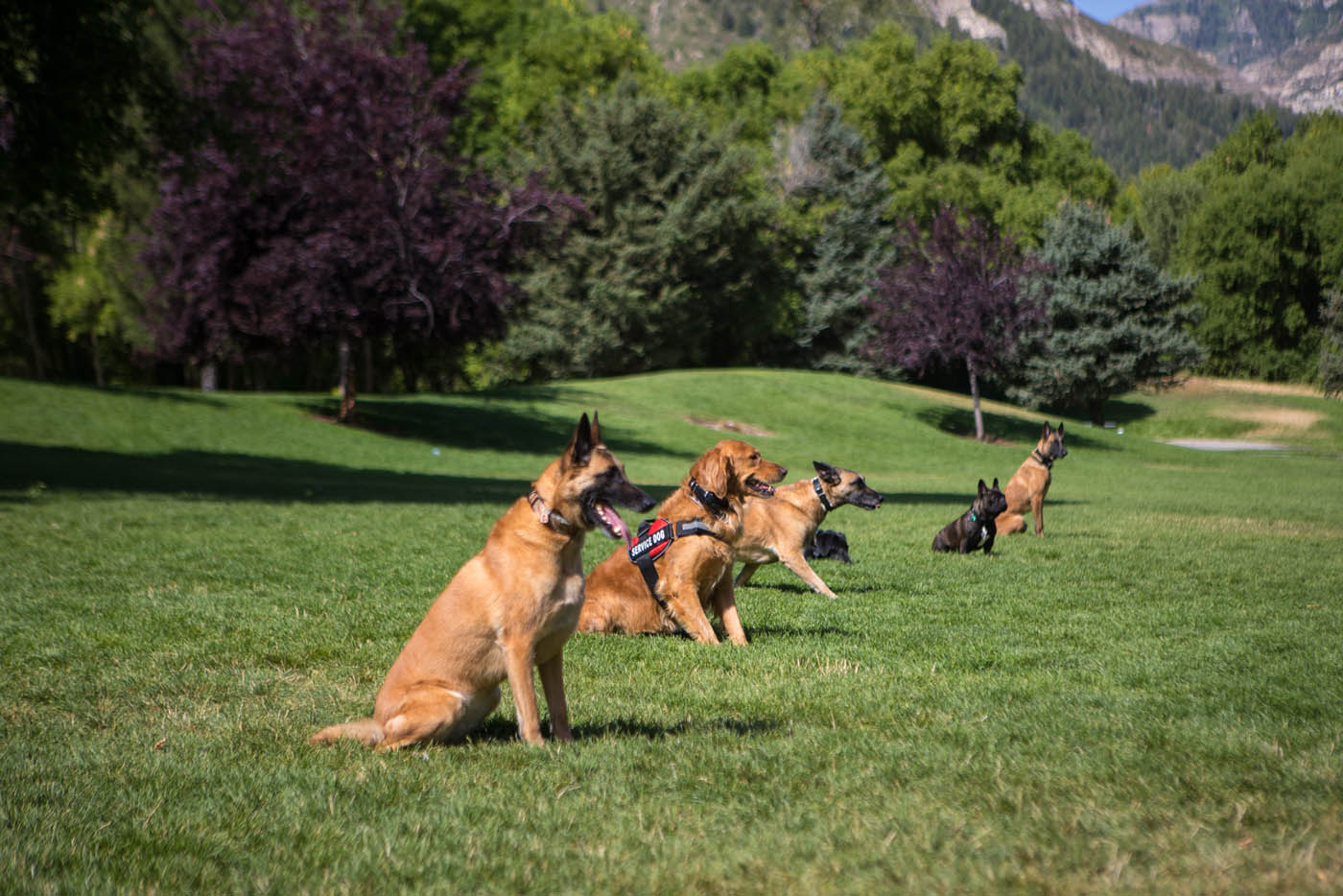Beginner's Overview to Effective Canine Training at Home
Successfully educating a canine at home needs a nuanced understanding of canine behavior and effective communication strategies. Developing clear training goals, utilizing high-quality rewards, and keeping consistency across household members are vital aspects. Incorporating training into day-to-day regimens can boost both involvement and retention.
Comprehending Pet Dog Behavior
Understanding pet dog behavior is necessary for reliable training and promoting an unified partnership between people and their canine buddies. Pet dogs interact largely through body movement, vocalizations, and facial expressions, making it crucial for proprietors to interpret these signals precisely. Identifying behaviors such as tail wagging, roaring, or trembling can give insights right into a dog's mood and objectives.

Usual behavior problems, such as aggression, stress and anxiety, or extreme barking, frequently come from misunderstandings or unmet needs. Observing and addressing these problems immediately can prevent acceleration and guarantee a positive training experience. By promoting a deep understanding of canine habits, proprietors can tailor their training approaches to fit their canine buddies, inevitably bring about a happy and mannerly animal.
Crucial Training Tools
A well-equipped training space can considerably boost the performance of dog training in the house. Necessary training tools make certain that both the pet and the instructor can involve in efficient sessions that promote understanding and bonding.

Buying a tough chain and a comfy, well-fitting collar or harness is important for security and control. These devices assist develop boundaries and guarantee the pet remains protected during training. Additionally, an assigned training area, complimentary from distractions, help focus for both the instructor and the pet.
Educating help such as training pads, cones, or dexterity devices can likewise improve the experience by presenting selection and challenges. Having a notebook or electronic app for tracking development can be indispensable, allowing you to note successes and areas for renovation. Utilizing these vital devices will certainly create a positive training setting and lay the foundation for effective discovering.
Developing an Educating Regimen
Establishing a consistent training regimen is vital for efficient pet training at home. A well-structured regular not only assists in strengthening wanted habits yet likewise gives your canine with a sense of protection and predictability. To create an effective training routine, start by recognizing particular training goals, such as basic commands, chain walking, or housebreaking.
Pick an assigned time daily for training sessions, ideally when your dog is receptive and alert. Procedure should be short, around 5 to 15 mins, to keep read review focus and prevent exhaustion. Consistency in timing and environment will enhance your dog's understanding experience.
Include training into day-to-day activities to strengthen abilities. Method commands throughout strolls or mealtime, which integrates discovering right into all-natural routines. Additionally, continue to be flexible and adjust the regular as essential, accommodating your canine's energy degrees and state of mind.
Positive Support Methods
Positive reinforcement strategies are fundamental to efficient dog training, promoting wanted habits with rewards instead than penalty. This approach makes use of positive stimulations, such as deals with, appreciation, or play, to motivate pet dogs to repeat details activities. The keystone of this approach is timing; rewards should be offered right away adhering to the desired actions to create a clear organization.
When carrying out positive support, it is necessary to pick rewards that are inspiring for your pet dog. High-value treats, such as little items of poultry or cheese, can be specifically effective throughout training sessions. In addition, varying the benefits can keep your canine's passion and enthusiasm.
Begin with simple commands, like "sit" or "remain," and progressively development to extra complex tasks. Uniformity is key; make certain that all member of the family utilize the very same commands and reward systems to stay clear of confusion.
Additionally, it is important to continue to be individual and navigate here prevent aggravation. Pets, like people, learn at their very own speed. By promoting a supportive training atmosphere with favorable reinforcement, you can enhance your pet dog's understanding experience while enhancing the bond in between you and your furry buddy, laying the groundwork for effective training end results.
Usual Training Challenges
While training a pet dog in the house can be a gratifying experience, it commonly features a collection of common challenges that can evaluate both persistence and uniformity. One widespread concern is disturbance. Dogs may come to be conveniently sidetracked by noises, motions, and even aromas in their environment, making it challenging to preserve their emphasis throughout training sessions.
An additional obstacle is inconsistency in commands and reinforcement. If relative use different signs or incentives, it can prevent and perplex the pet progression. Developing a unified strategy is essential for effective interaction.
In addition, pet dogs can experience aggravation or anxiety, especially if they do not understand what is expected of them. This can lead to unfavorable habits, such as barking or chewing.
Lastly, the timing of support is important (Dog training). Postponed incentives can lessen the efficiency of positive support, as canines might stop working to attach the habits with the reward
Getting over these difficulties requires dedication, clear communication, and an organized training plan. Identifying and attending to these common barriers will lead the method for a more effective and pleasurable training experience at home.
Final Thought
In final thought, effective pet training at home necessitates a comprehensive understanding of canine behavior and efficient communication methods. By developing clear training objectives and making use of top quality deals with alongside positive reinforcement, the training process comes to be much more rewarding for both the pet dog and the trainer.
Developing a consistent training regimen is vital for efficient pet training at home.Favorable reinforcement techniques are basic to reliable pet dog training, promoting desired actions with rewards rather than penalty (Dog training). By promoting a supportive training setting via positive reinforcement, you can boost your pet dog's knowing experience while enhancing the bond between you and your hairy buddy, laying the groundwork for successful training outcomes
In verdict, effective dog training at home necessitates a thorough understanding of canine actions and efficient communication techniques. By developing clear training goals and making use of high-quality treats along with positive reinforcement, the training procedure comes to be much more rewarding for both the pet and the visit fitness instructor.